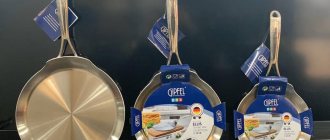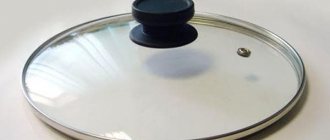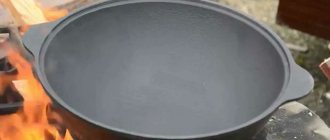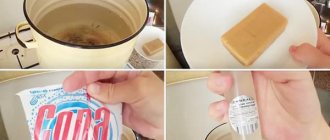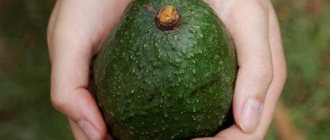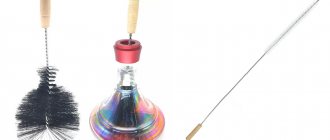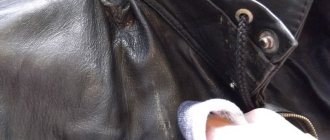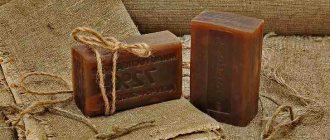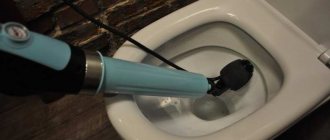After purchasing a frying pan, it makes sense to carry out the “hardening” procedure. Then the frying pan will serve for a long time and perform its functions better. This happens because pans leave the factory after being treated with special compounds that are washed off after the first wash. And if you initially cook food in a new frying pan, then the smallest particles will clog into micropores, and the frying pan will quickly become unusable. If you use simple tips and spend a little time, the frying pan will show its best side during operation.
Preparing your cookware for use will extend its service life.
How to prepare a steel frying pan
A steel frying pan does not corrode. But for this to happen, the alloy must have the correct ratio of nickel and chromium. However, preparation for operation is necessary in any case. After purchase, the dishes must be calcined and processed.
After purchase, the dishes must be calcined and processed.
How to heat a frying pan? Begin by washing the product and drying it. Pour 1 cm thick of unrefined oil onto the bottom of the frying pan, add table salt, heat the frying pan and leave on low heat for 15 minutes. After the first smoke appears, turn off the pan. This completes the calcination.
After the cookware has cooled, it is necessary to remove any remaining oil from it. The pan is not washed or wiped; in this form it is ready for the first cooking.
Descaling
Scale is the deposit of magnesium and calcium salts due to the use of hard water. It can be easily dealt with with acid. But, since aluminum does not like aggressive influences, we will use mild means. Here are some ways to remove scale:
- Pour one spoon of soda ash, add a glass of water, and boil. Cool. Repeat boiling 2-3 times. Usually, the scale comes off on its own. If that doesn't work, scrub a little with a sponge.
- Boil water in a container, add one tablespoon of soda and leave to cool. The scale will soften and can be easily removed with a soft cloth.
- Pour Sprite or Cola into a bowl and bring to a boil. Leave to cool, then rinse. The same can be done with cucumber pickle.
Our grandmothers used aluminum frying pans, but even today they remain a favorite utensil. They are light and comfortable. Do not require complex care. Durable. If you occasionally clean them of old stains, they will serve your grandchildren.
Source
How an aluminum product is prepared
Aluminum equipment does not require complex preparation after purchase.
Aluminum equipment does not require complex preparation after purchase.
New aluminum frying pan - how to prepare it for use:
- Fill a new frying pan halfway with water and add lemon juice;
- Boil for 20 minutes;
- Hot steam has a detrimental effect on microorganisms, and lemon helps eliminate unpleasant odors that come from a new product.
You can also use coarse salt for calcination. After rinsing the pan, pour salt into it. The heating process is carried out for 20 minutes over low heat. After this, turn off the stove and leave the salt until it cools completely, then throw it away. Finish the treatment by wiping with a cloth soaked in oil.
Sometimes there may be an unpleasant odor when heating, but this is normal.
The need for the preparatory stage
Before the first use, new dishes (any) are prepared for “battle”: they are washed, possible dirt and debris are removed. Frying pans (cast iron, steel, aluminum) are additionally calcined, increasing the service life of the products.
Preparatory heat treatment is an opportunity to identify defects and test in practice the strength and reliability of the purchased product. If any defects are found (cracks, chips), immediately return the purchase back to the store.
Calcination helps not only to increase the operating time of the frying pan, but also to prepare high-quality food and reduce the risk of food burning. Regardless of the type of cookware (pancakes, grills, woks, regular frying pans), they must be properly prepared so that you don’t complain about problems that arise later. At the same time, they take into account the material from which the kitchen utensils are made, and follow simple rules of care.
How to prepare a non-stick frying pan
A frying pan with a non-stick surface should not be heated. This may result in damage to the product. Before using a new frying pan, just wash it with a sponge without using an abrasive detergent. After complete drying, wipe the dishes with a soft cloth soaked in purified oil.
Before using a new frying pan, just wash it with a sponge without using an abrasive detergent.
Additional information: To maintain the non-stick properties of the cookware, it is sometimes necessary to lubricate it with refined oil. It is enough to carry out this manipulation once every two weeks.
Preparing non-stick and enamel cookware
It is strictly not recommended to heat pans with enamel, ceramic or other non-stick coating. New cookware of this quality is washed with warm water and soap to remove factory grease, and then wiped dry with a cloth or paper napkin. It is advisable to lightly grease the bottom and walls of the enamel frying pan.
Important! Caring for sauté pans with non-stick coating requires special care. Damage to the protective layer renders the product unusable.
Why calcinate a frying pan?
After purchasing cookware, it is important to prepare for use. To do this, the dishes are calcined in any convenient way. This manipulation allows you to identify a defective product and ensure long-term operation.
Calcination allows you to identify a defective product and ensure long-term operation.
What tasks does calcination perform?
After purchasing a frying pan, you need to heat it. But few people know why. This manipulation is easily explained. During production, products are treated with machine oil. It must be removed from the dishes; this can be done with ordinary washing liquid. But the heating process allows you to completely remove the remaining substances used in production.
Calcination also allows you to give the frying pan positive qualities. The cookware acquires non-stick properties and is protected from corrosion processes.
There is no damage to the product during the calcination process. If there are cracks in the frying pan, it must be returned to the store. This indicates a poor quality product.
Which pans should not be heated?
Homemade methods help prepare the surface for first use. The calcination process is eliminated for frying pans with ceramic and non-stick coatings. This cookware already has characteristics that prevent food from burning. This manipulation is carried out for products made of aluminum, steel and cast iron.
The calcination process is eliminated for frying pans with ceramic and non-stick coatings.
Consolidating the effect obtained
The best way to protect an aluminum frying pan from burning for a long time is to repeat the calcination several times .
The following simple tips will also help you preserve the non-stick coating you created yourself:
- wash the frying pan with soft sponges and do not use hard, abrasive or metal products;
- Stir and turn food with a wooden or plastic spatula;
- If, over time, burnt particles appear, then sprinkle them with baking soda and rub lightly - the dirt will be easily removed.
Remember that it is better to do a simple preliminary preparation before use immediately after purchasing an aluminum frying pan and not to put it off until later, when you will need it for cooking.
If you don't want to bother with preparation, buy pans with a non-stick coating. Find out how to choose stone or ceramic in other instructions on our “Types of Cookware” website.
Source
Methods for calcining a new frying pan
Calcination was used even before the invention of non-stick surfaces. This manipulation helps prepare the equipment for use - the pores are clogged and a protective surface is created. The baking process helps prevent food from sticking to the cookware.
Before this manipulation, carefully study the instructions for using the frying pan.
“Grandma’s” method using salt
How to season a frying pan with salt? This method is the most common and is distinguished by its simplicity. The procedure is as follows:
- The pan is washed and wiped dry;
- Place on the stove over low heat;
- Salt is distributed along the bottom;
- Heat for 20 minutes and allow to cool;
- Then the bottom is freed from salt and wiped with a soft cloth soaked in any oil. Do not process a hot surface.
The dishes can be used after 2 days.
The baking process helps prevent food from sticking to the cookware.
Option with water without salt
It is not necessary to use salt during the calcination process. You can limit yourself to water. Simply boil it in a new container and then drain it. Then treat the surface with oil. It is recommended not to use utensils for several days after treatment.
Simply boil the water in a new kitchen utensil and then drain it.
Calcination with vegetable oil
Another common method of preparing for use is using oil. This manipulation is carried out as follows:
- Pour oil so that it covers the bottom;
- Heat on fire for 25 minutes;
- After complete cooling, the dishes are rinsed with water;
- You can use the inventory after 2 days.
This method can also be used to update old dishes.
It is better to use refined oil so that there is not a lot of smoke.
Before calcination, you must turn on the hood and open all windows. This will help get rid of cooking odors faster. It is better to use refined oil so that there is not a lot of smoke.
Calcination on the stove
The easiest way to heat a frying pan is on the stove. But be sure to follow safety precautions and control the process. You also need to follow the method of processing dishes.
It is imperative to follow safety precautions and control the process.
Heating a frying pan in the oven
The method of preparing the pan for the first use in the oven saves a lot of time, because you do not need to stand near the stove. The procedure is as follows:
- The frying pan is greased with purified oil on all sides;
- Place the equipment in the preheated oven upside down;
- The oven does not need to be very hot;
- After an hour, turn off the oven and leave the pan until it cools completely;
- After 2 days, a verification test is carried out and the manipulation is repeated if necessary.
The method of preparing the pan for the first use in the oven saves a lot of time, because you do not need to stand near the stove.
Important safety rules during calcination
The process of calcining equipment is not complicated. But it is necessary to follow safety rules when preparing dishes for first use:
- Do not pour water into heated oil;
- After the frying pan is fully heated, you should not immediately wash it with cold water;
- It is necessary to prepare thick grips in advance so that during manipulation you do not burn your hands or damage the table surface;
- You need to make sure that there are no tools made of fusible materials nearby.
What can you cook?
It is inappropriate to talk about categorical prohibitions on the use of aluminum pans. But it is better not to cook individual dishes in it, which can ruin the appearance and shorten the shelf life.
Do not cook acidic or alkaline foods in aluminum pans, such as sour cabbage soup, compotes, sauces, marinades, vegetables: potatoes, beets; baby and dietary food. The acid and alkali contained in such products destroy the protective oxide layer, resulting in aluminum oxide in the form of a dark coating. Aluminum hydroxide may form, which is toxic.
You cannot collect sour berries in such a container, for example, cranberries. Since it contains a lot of acid, and it destroys the protective film, the metal comes into contact with the product and enriches it with itself. A high concentration of aluminum in berries is harmful to the body.
Aluminum pans are considered indispensable when preparing side dishes from cereals, pasta, and potatoes. These dishes do not burn and do not damage the dishes.
Is it possible to make jam?
There is no clear answer. When cooking preserves, jams, marmalade, the berries are covered with granulated sugar until the juice appears. It releases acid, which is known to destroy the protective film of an aluminum pan, and the metal comes into contact with the product. The jam is cooked in 2 or even 3 steps. It turns out that the product comes into contact with aluminum for a long time, and the jam absorbs the metal. Therefore, it is better not to use an aluminum pan for making jam. If this concerns five-minute jam, then you can cook it and immediately transfer it to jars. But, if you cook it several times, it is advisable not to use aluminum cookware.
Can I use a dishwasher to wash pans?
Before loading the pan into the dishwasher, you must read the instructions for its use. It indicates what materials the dishes can be washed in. Also on the products themselves there are symbols that tell you how to wash the dish.
Do not place cast iron, aluminum or Teflon pans in the dishwasher.
Do not place cast iron, aluminum or Teflon pans in the dishwasher. After such manipulation, the food in them will begin to burn, and the product may lose its shape.
- Cast iron objects have an uneven surface. Before each use, it is advisable to calcinate to fill the pores. It fills unevenness and creates a protective film. Under the influence of detergents or too hard sponges, the protective layer is washed off. This leads to the formation of rust on the surface, and food begins to stick to the bottom during cooking. Cast iron frying pans are subject to gels and abrasive powders in the dishwasher. Staying in water for too long will damage the dishes.
- The Teflon coating is also vulnerable to washing in the dishwasher. The polymer surface is easily damaged by mechanical stress. Manufacturers recommend stirring food with a wooden spatula during cooking. When washing in the car, the film may peel off. Teflon has non-stick characteristics, so washing it by hand is not difficult.
- Aluminum cookware is known for being cheap and ineffective. This equipment heats up quickly, which leads to food sticking.
These dishes cannot be washed in a machine. Pans quickly darken and release toxic substances that negatively affect human health. Food prepared in such containers is not suitable for consumption.
In the dishwasher, the oxide film is quickly destroyed. This is caused by too much water pressure and alkaline cleaning fluids. Metal reacts to water, which leads to its darkening and destruction. Darkening may not occur at once, but with each wash, the destruction of the surface will become more pronounced.
It is important to properly prepare the frying pan for use, then the kitchen equipment will serve for many years.
Heating a frying pan is an important condition for long-term operation. Therefore, you need to carry out this process correctly, then the kitchen equipment will serve for many years.
Cleaning an aluminum frying pan from soot and burnt food
Over time, a layer of burnt food residue or soot appears on the aluminum. Firstly, it is not aesthetically pleasing, and secondly, it is dangerous to health. And it is advisable to periodically clean the old frying pan from dirt.
This is easy to do at home. The methods are not expensive, because everything you need is usually available.
Here are some important points to consider:
- Aluminum cookware does not like the use of harsh abrasives and alkalis. Because of them, the oxide film may be damaged and food will begin to stick to the surface;
- choose only soft sponges and cloths;
- Wash such utensils only by hand; they may become deformed in the dishwasher.
Boiling or boiling
A gentle and at the same time reliable way to deal with old carbon deposits on any frying pan or saucepan. And at the same time the outer and inner walls will be cleaned. You need to prepare a container that will hold dirty items. Prepare the mixture. We offer two options:
- A teaspoon of salt + the peel of one sour apple + half an onion (consumption per liter of water);
- Soda ash 500 g + stationery glue 200 g + a piece of laundry soap (consumption per 10 liters of water)

